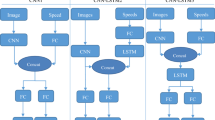Abstract
With the recent emergence of artificial intelligence (AI) technology, autonomous vehicle industry has rapidly adopted this technology to investigate self-driving systems based on AI technology. Although autonomous driving is frequently used in high-speed environments, most studies are conducted on low-speed driving on complex urban roads. Currently, most commercialized self-driving cars in SAE autonomous driving level 2 provide practical performance on high-speed roads using various sensors. However, these systems have to process huge sensor data and apply complex control algorithms. Recently, studies have been conducted on the use of image-based end-to-end deep learning to control autonomous driving systems that can be configured at a low cost without expensive sensors and complex processes. In this study, we proposed an autonomous driving control system using a novel end-to-end deep learning model for high-speed environments, and also compared the performance of the proposed system with NVIDIA end-to-end driving system.






















Similar content being viewed by others
Explore related subjects
Discover the latest articles and news from researchers in related subjects, suggested using machine learning.References
Bojarski M et al (2016) End to end learning for self-driving cars. arXiv preprint arXiv:1604.07316
Chen Z, Huang X (2017) End-to-end learning for lane keeping of self-driving cars. In: 2017 IEEE Intelligent Vehicles Symposium (IV). IEEE
Yang Z et al (2018)End-to-end multi-modal multi-task vehicle control for self-driving cars with visual perceptions. In: 2018 24th International Conference on Pattern Recognition (ICPR). IEEE
Li Y, Ibanez-Guzman (2020) Lidar for autonomous driving: the principles, challenges, and trends for automotive lidar and perception systems. arXiv preprint arXiv:2004.08467
Kim J et al (2019) Multi-sensor-based detection and tracking of moving objects for relative position estimation in autonomous driving conditions. J Supercomput 76:8225–8247
Grigorescu S et al (2020) A survey of deep learning techniques for autonomous driving. J Field Robot 37(3):362–386
LeCun Y et al (1989) Backpropagation applied to handwritten zip code recognition. Neural Comput 1(4):541–551
LeCun Y et al (1998) Gradient-based learning applied to document recognition. Proc IEEE 86(11):2278–2324
Krizhevsky A, Sutskever I, Hinton GE (2012) Imagenet classification with deep convolutional neural networks. In: Advances in neural information processing systems
Zeiler MD, Rob F (2014) Visualizing and understanding convolutional networks. In: European Conference on Computer Vision. Springer, Cham
Szegedy C et al. (2015)Going deeper with convolutions. In: Proceedings of the IEEE Conference on Computer Vision and Pattern Recognition
Hochreiter S, Schmidhuber J (1997) Long short-term memory. Neural Comput 9(8):1735–1780
Chung J et al (2014) Empirical evaluation of gated recurrent neural networks on sequence modeling. arXiv preprint arXiv:1412.3555
Shi X et al (2015) Convolutional LSTM network: a machine learning approach for precipitation nowcasting. In: Advances in neural information processing systems
Donahue J et al (2015) Long-term recurrent convolutional networks for visual recognition and description. In: Proceedings of the IEEE Conference on Computer Vision and Pattern Recognition
Acknowledgements
This research was supported by the MSIT(Ministry of Science and ICT), Korea, under the ITRC(Information Technology Research Center) support program(IITP-2021-2016-0-00465) supervised by the IITP(Institute for Information & Communications Technology Planning & Evaluation).
Author information
Authors and Affiliations
Corresponding author
Additional information
Publisher's Note
Springer Nature remains neutral with regard to jurisdictional claims in published maps and institutional affiliations.
Rights and permissions
About this article
Cite this article
Kim, Cj., Lee, Mj., Hwang, Kh. et al. End-to-end deep learning-based autonomous driving control for high-speed environment. J Supercomput 78, 1961–1982 (2022). https://doi.org/10.1007/s11227-021-03929-8
Accepted:
Published:
Issue Date:
DOI: https://doi.org/10.1007/s11227-021-03929-8




